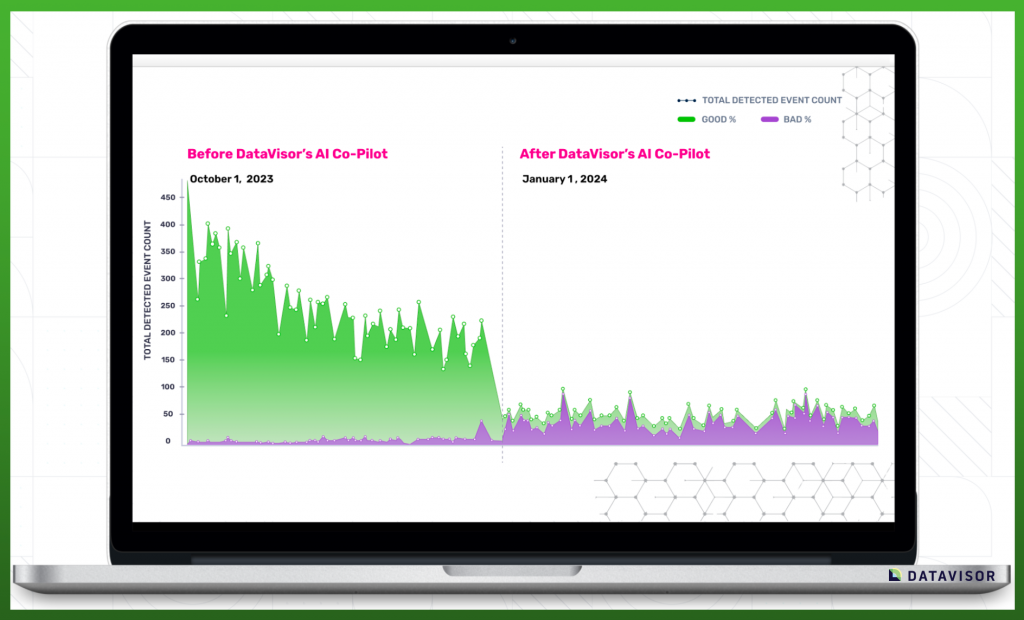
How to Save 50% of Your Fraud Team’s Time with Automated Rule Tuning
Fraud prevention teams’ everyday routines aren’t limited to only fighting against attacks. They’re also constantly grappling with an ever-growing portfolio of fraud rules as they adapt to new threats that evolve in real time. Each new threat means a new strategy to combat it. What’s more, every new threat is more sophisticated than the last as fraudsters fine-tune their tactics by learning what fraud prevention teams are doing to stop them. Fraud experts will tell you that fraudsters know financial institutions’ (FIs) fraud rules better than even some of their fraud prevention team members do. That’s not to say fraud teams aren’t up to the challenge of matching ever-changing fraud attacks. But the fact remains that fraud fighters have a larger burden of work than fraudsters do. The solution to putting fraud fighters back ahead? AI-powered automated rule tuning. Using this tool, fraud teams can efficiently optimize rules, reduce false positives, save 30% of total operations costs tied to adjusting rules, and save 50% of employees time overall—time they can put back toward directly combating fraud.
What challenges are slowing fraud teams down right now?
At a high level, fraud teams lose time they could spend directly investigating and preventing fraud attacks on what more or less amounts overhead tasks. Many of these tasks are data-heavy workloads that require fraud experts to pull data, analyze it, and then implement rules once they have gleaned insights from that data. A typical rundown of these tasks looks something like this:
- Manually pull sizable historical datasets for analysis
- Clean and merge the datasets (a.k.a Extract, Transform, and Load or ETL process)
- Attach fraud labels to the datasets
- Manually perform sensitivity analysis using spreadsheets or SQL tools for the right threshold to minimize the false positive rate or increase the fraud capture rate
- After determining the right thresholds, have the IT team re-implement the rule
- Monitor the new rule implemented in the production environment
These tasks are critical to ensure an FI’s fraud prevention systems function effectively and detect known fraud patterns. Due to the expertise required, highly proficient fraud team members take a meticulous approach to completing them. The problem here is obvious—organizations’ most knowledgeable fraud fighters must dedicate huge chunks of their time to rule and data-related tasks, which makes it difficult to focus on the more crucial task of developing fraud strategies that can keep pace with the fast-evolving fraud. Without robust, wide-ranging prevention strategies that can adapt to evolving fraud tactics, fraud teams can’t respond swiftly to threats by creating new rules or fine-tuning existing ones. This in turn often leads to the dilemma of high false positives, inadvertently affecting legitimate transactions, or high false negatives, letting fraud slip through. In short, fraud teams are burdened with a time-consuming, data-heavy rule tuning process that can’t be delegated to less experienced team members. This results in significant lost time and a reactive approach to fraud mitigation that puts teams behind fraud rings’ pace.

How automated rule tuning enhances fraud detection efficiency
Rule tuning is a delicate process that requires a combination of deep fraud prevention knowledge and expertise in managing fraud rules. Automating this process requires a sophisticated system that can replicate that unique fraud knowledge as closely as possible, while also adding the quick adaptability that human rule tuning allows. Through the power of generative AI, these tasks can be trusted to machine learning. However, that generative AI solution needs to meet high standards and include a few specific capabilities.
Enhancing rule alternatives
In order to monitor and evaluate rule performance effectively, fraud experts carefully examine detection coverage, or recall, and detection accuracy, or precision. Leading solutions like AI Co-Pilot replicate this process as closely as possible by meticulously evaluating individual rule performances, then suggesting enhanced rule alternatives that prioritize a perfect balance between recall and precision.
Comparative insights
In the decision-making process, fraud experts leverage comparisons of past rule performance and new rule performance to choose winning solutions. AI can also capably recreate this process by sharing insights on the performance of rules it automatically suggests and the existing it automatically adjusts against existing non-AI generated rule performance.

How a popular fintech applied automated rule tuning to increase efficiency
While this generative AI-powered automated rule tuning approach is new, there are real-world examples that prove its efficacy. In a case we observed firsthand at DataVisor, a well-known US-based fintech adopted automated rule tuning through AI Co-Pilot with the goal of improving customer experience by reducing false positives during its onboarding process. Before adopting AI Co-Pilot and implementing automated rule tuning, the fintech’s onboarding rules are extremely conservative. This, of course, created friction and a critical point in the customer journey. They realized there was a direct correlation between this hampered experience and the fintech’s stagnating growth. On top of that, their existing rules resulted in an abnormally high volume of fraud cases that required manual investigation, which taxed their fraud operation team’s efficiency. Add in a high false positive rate, and it was clear the organization needed to find a way to relieve pressure on their fraud team, reduce customer friction, and lower the outsized volume of cases requiring investigation and false positives. After implementing AI Co-Pilot and adopting automated rule tuning, the fintech decreased daily fraud alert trigger volume by nearly 87% while simultaneously increasing detection of actual fraud cases by 30% within a few clicks. In just a few minutes, automated rule tuning lessened the burden on their fraud investigations team and produced a sizable increase in detection accuracy (precision) and detection coverage (recall).The image below gives a strong visual representation of the immediate impact automated rule tuning through AI Co-Pilot delivered.

The fraud investigation team was able to trust AI Co-Pilot to accurately take on a role that heavily taxed their team, leading to a smoother customer experience and fewer fraud headaches across the customer journey. If you’re curious to read more about this real-world example of automated rule tuning’s capabilities, download a complimentary copy of our AI Co-Pilot ebook. If you want to understand how this powerful tool can fit into your own fraud prevention processes, book a customized demo of the solution with our team.

Latest Articles







